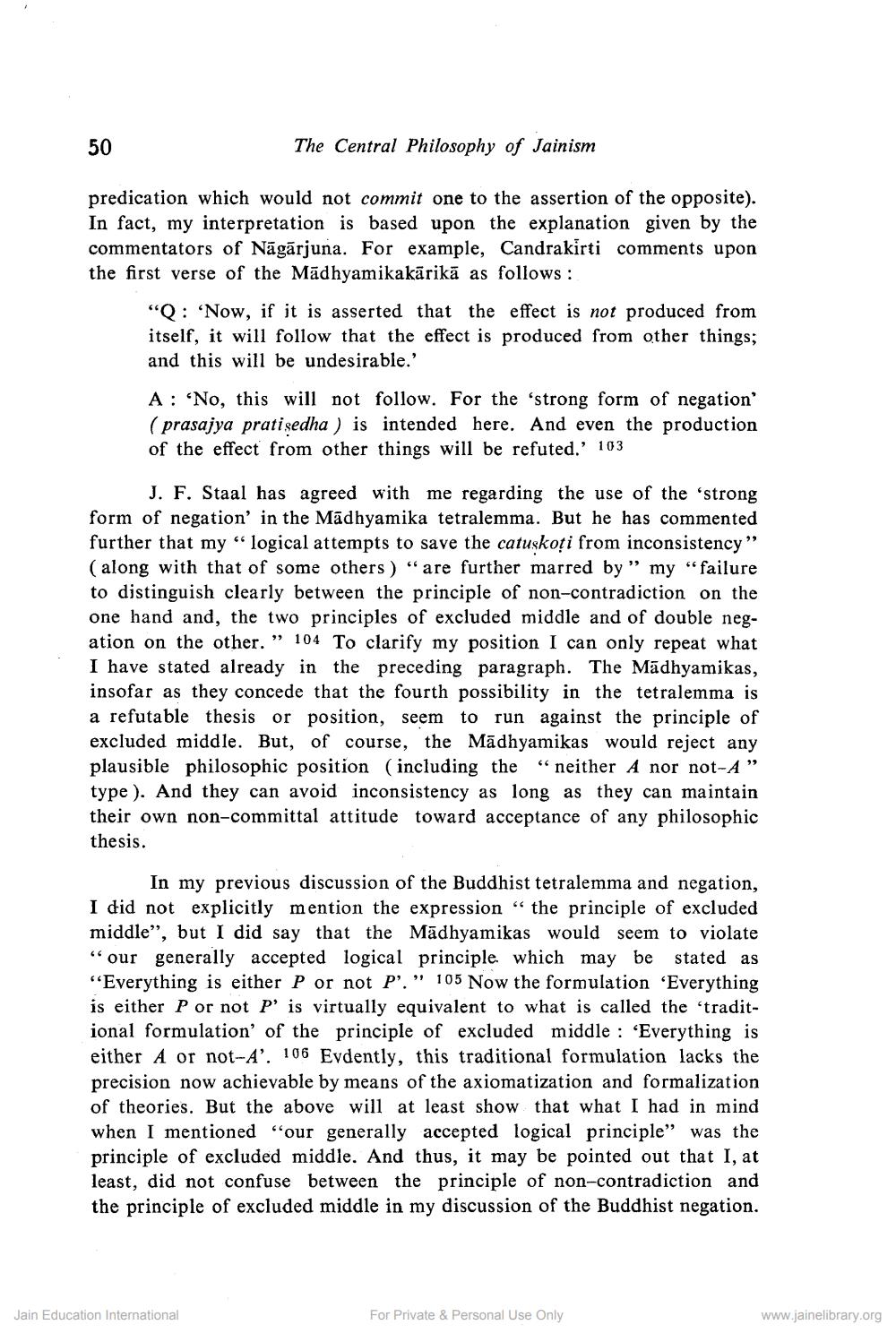________________
50
The Central Philosophy of Jainism
predication which would not commit one to the assertion of the opposite). In fact, my interpretation is based upon the explanation given by the commentators of Nāgārjuna. For example, Candrakirti comments upon the first verse of the Mādhyamikakārikā as follows:
"Q: 'Now, if it is asserted that the effect is not produced from itself, it will follow that the effect is produced from other things; and this will be undesirable.'
A: 'No, this will not follow. For the 'strong form of negation' (prasajya prati sedha ) is intended here. And even the production of the effect from other things will be refuted.' 103
J. F. Staal has agreed with me regarding the use of the 'strong form of negation' in the Madhyamika tetralemma. But he has commented further that my “logical attempts to save the catuskoți from inconsistency" (along with that of some others ) "are further marred by " my “failure to distinguish clearly between the principle of non-contradiction on the one hand and, the two principles of excluded middle and of double negation on the other.” 104 To clarify my position I can only repeat what I have stated already in the preceding paragraph. The Mādhyamikas, insofar as they concede that the fourth possibility in the tetralemma is a refutable thesis or position, seem to run against the principle of excluded middle. But, of course, the Mādhyamikas would reject any plausible philosophic position (including the “neither A nor not-A” type ). And they can avoid inconsistency as long as they can maintain their own non-committal attitude toward acceptance of any philosophic thesis.
In my previous discussion of the Buddhist tetralemma and negation, I did not explicitly mention the expression “ the principle of excluded middle”, but I did say that the Mādhyamikas would seem to violate “our generally accepted logical principle which may be stated as "Everything is either P or not P'.” 105 Now the formulation 'Everything is either P or not P' is virtually equivalent to what is called the 'traditional formulation of the principle of excluded middle : 'Everything is either A or not-A'. 106 Evdently, this traditional formulation lacks the precision now achievable by means of the axiomatization and formalization of theories. But the above will at least show that what I had in mind when I mentioned “our generally accepted logical principle" was the principle of excluded middle. And thus, it may be pointed out that I, at least, did not confuse between the principle of non-contradiction and the principle of excluded middle in my discussion of the Buddhist negation.
Jain Education International
For Private & Personal Use Only
www.jainelibrary.org




